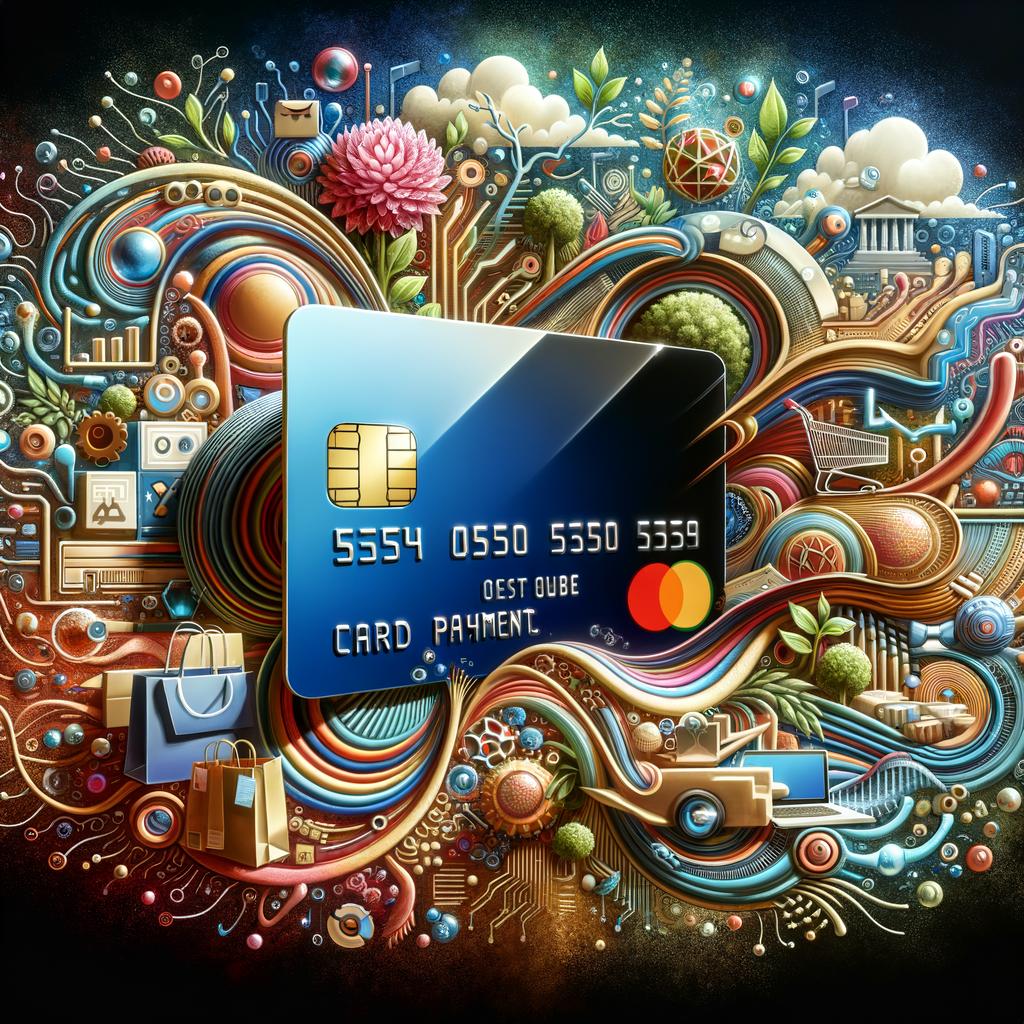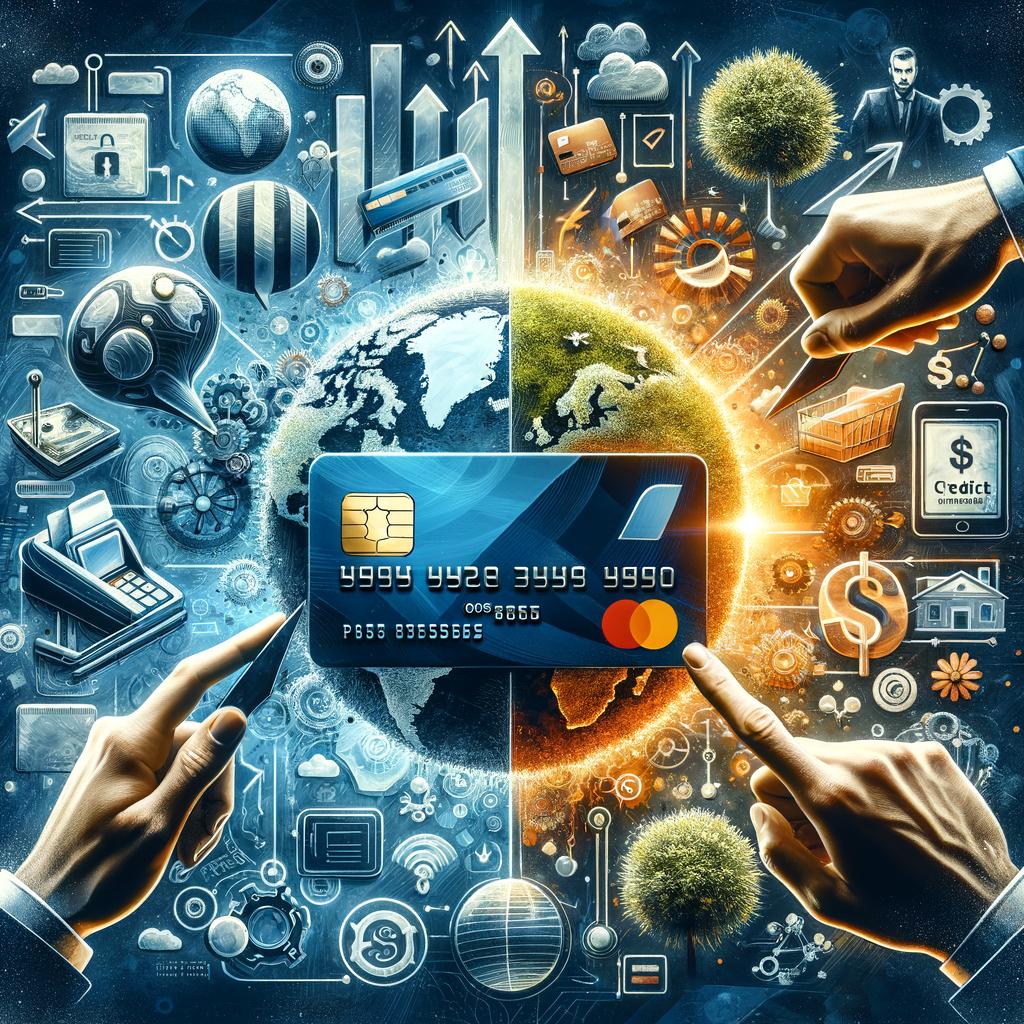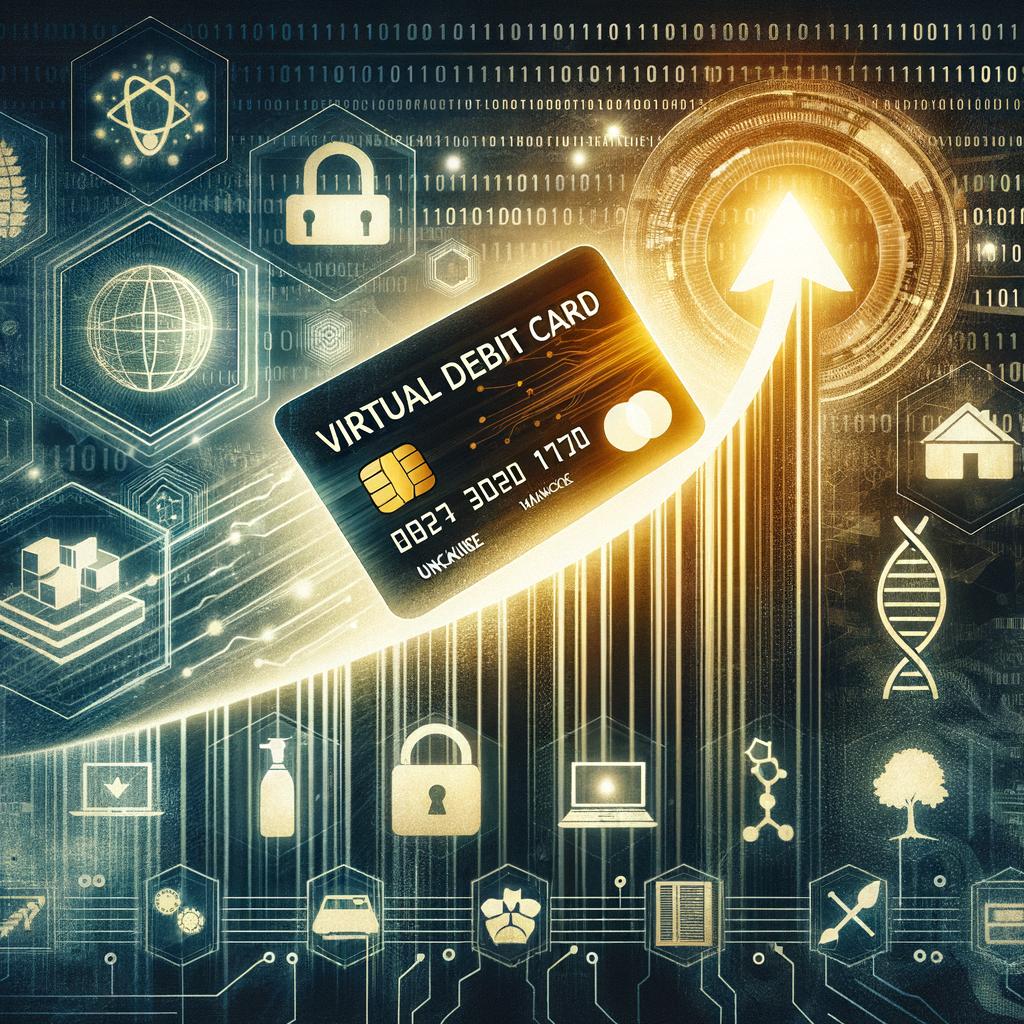Understanding and Preventing Credit Card Fraud in Online Transactions: Protecting Your Digital Dough!
We live in a digital age, where our every whim can be satisfied with a simple click of a button – be it purchasing your favorite sneakers or booking a dream getaway. Online transactions have made life a breeze, but they’ve also given rise to a notorious gang of digital thieves – credit card fraudsters! Don’t worry though, my friend, for I have got you covered! In this article, we’ll delve deep into the world of credit card fraud in online transactions, arm you with knowledge, and equip you with some kick-ass preventive measures. So, let’s bust these cyber-criminals like true online superheroes!
First things first, let’s get down to the nitty-gritty of how credit card fraud actually happens. The most popular technique employed by these sneaky fraudsters is called “phishing.” Picture yourself innocently browsing the online realm, when suddenly you receive an email from Bob’s Bargain Bonanza enticing you with an irresistible offer. Beware! That email might be a wicked web of deceit, aimed at extracting your credit card information. These fraudsters are like chameleons, mimicking the branding of bona fide websites, hoping you won’t spot the deception. Sneaky devils, right?
But fear not, dear reader, for knowledge is power! There are telltale signs to look out for to dodge these savvy swindlers. First and foremost, be cautious when sharing your credit card details. Legitimate websites always ensure you’re in a secure environment by displaying a padlock icon in the address bar. If it’s missing, slam on the brakes and hit the reverse button! Additionally, train your eyes to spot fake emails by being suspicious of unexpected correspondence, spelling errors, or dodgy attachments. Let the fraudster’s wicked plan crumble like a house of cards!
Now, let’s zoom into the realm of preventive measures. Buckle up, folks; it’s about to get safer than Fort Knox in here! The first weapon in your arsenal is creating unhackable passwords. Do you seriously think “password123” will save you from the clutches of these online villains? Think again! Opt for a combination of uppercase and lowercase letters, numbers, and symbols that could even confuse Sherlock Holmes. And please, for the love of tacos, don’t use the same password for every site. That’s like serving all your online accounts on a silver platter to the fraudsters!
Speaking of online accounts, another gem of wisdom is to keep them under surveillance like a hawk. Regularly monitor your credit card statements and activity to detect any shady shenanigans. Many banks and credit card companies offer apps that let you track transactions in real-time. Use them like a trusty sidekick, and you’ll catch those fraudsters red-handed!
Alright, my fellow internet-savvy comrades, we’re almost at the end of this exhilarating journey. But before we part ways, let me drop one final nugget of wisdom: keep your devices squeaky clean! Install antivirus software, update it like your life depends on it, and never ever click on suspicious pop-up ads. Those little monsters are like the Joker to your Batman, just waiting for a chance to unleash chaos!
Now, armed with knowledge and expert tips, go forth and conquer the online realm! Leave those fraudulent fiends green with envy as they witness your impenetrable digital fortress. Remember, you’re the hero here, and credit card fraudsters don’t stand a chance against your superpowers of vigilance!
E-commerce and Card Processing: Aligning with Consumer Buying Behaviors
In the vast realm of e-commerce, the art of perfecting the online shopping experience has become a coveted goal for businesses. With a click of a button, consumers are transported to a virtual shopping wonderland, where convenience and variety reign supreme. But what truly makes this virtual realm sparkle with success lies within the intricate world of card processing. Yes, my fellow shopaholics, the backbone of your online indulgence is none other than the efficient alignment of e-commerce and card processing with our ever-evolving consumer buying behaviors.
Picture this: it’s a lazy Sunday afternoon, and you find yourself succumbing to the irresistible urge to splurge. Your favorite online store beckons, promising a treasure trove of delight. As you navigate through the digital aisles, armed with your trusty credit card, you expect nothing short of a seamless transaction. But little do you know that the power of consumer buying behaviors is at play, silently dictating your shopping destiny!
Let’s dive into the fascinating realm of consumer buying behaviors for a moment. Behold, the psychology behind our online splurges! As consumers, we seek instant gratification, the thrill of snagging a great deal, and the satisfaction of a seamless shopping experience. E-commerce platforms, recognizing these innate desires, leave no stone unturned to align with our buying behaviors.
Herein lies the crucial role of card processing in this captivating dance. Without a smooth and secure card processing system, the entire e-commerce experience could crumble like a deck of cards, leaving customers disgruntled and businesses scrambling for survival. Imagine the horror of a slow-loading page or an arduous checkout process! That’s precisely where intelligent card processing swoops in like a knight in shining armor.
By leveraging a robust card processing system, businesses ensure that payments are processed swiftly and securely, leaving customers blissfully content. Thanks to real-time authorization capabilities, we can seamlessly swipe, tap, or insert our cards into the digital world, knowing that our transactions are safe and sound. Timely verification and fraud prevention mechanisms further enhance our confidence in the system, allowing us to embark on our virtual shopping sprees with peace of mind.
But it doesn’t end there, my friends! Businesses must also align their card processing systems with the dizzying array of payment methods consumers adore. From classic credit and debit cards to mobile wallets and digital currencies, the modern shopper craves flexibility in their transaction choices. No longer limited to a single mode of payment, convenience-driven customers seek empowerment through diverse options. Therefore, successful e-commerce platforms integrate versatile card processing solutions, catering to the individual preferences of the virtual shopaholic.
In conclusion, the art of aligning e-commerce and card processing with consumer buying behaviors is a delicate dance of understanding and adaptation. By staying attuned to the innate desires of today’s shoppers, businesses can embrace the power of efficient and secure card processing systems. Harnessing the ability to conquer the hearts of consumers through seamless transactions and versatile payment methods ultimately ensures that e-commerce thrives and virtual shopping becomes an unrivaled sensory delight. So, next time you embark on an online shopping extravaganza, remember to thank the invisible force that truly makes it all possible─the magical alignment of e-commerce and card processing!
Der Wall-Street-Index Dow Jones Industrial sowie der breite S&P 500 erreichten Rekordhöhen, nachdem sie zuvor kaum vom Fleck gekommen waren. Und das, obwohl in dieser Woche zahlreiche wichtige Konjunk …
Are you tired of waiting ages for your payments to go through? Well, brace yourselves, folks, because the era of 5G is upon us, and it’s about to revolutionize mobile payment processing like never before! Picture yourself strolling through a bustling street, eyes locked on that irresistible new phone you’ve been eyeing. Normally, purchasing it online would mean enduring a painfully slow payment process – but not anymore, my friend. With 5G technology, the future of mobile payments is set to be faster, smoother, and more delightful than ever before.
So, what on earth is this dazzling 5G everyone’s been talking about? Simply put, it’s the fifth generation of mobile networks, promising speeds so mind-bogglingly fast, they’ll give The Flash a run for his money! But it’s not just about download and streaming speeds; 5G is aiming to transform various industries, and mobile payment processing is at the forefront of this exciting transformation.
Imagine tapping your phone on a payment terminal, and voila! Your transaction is complete in the blink of an eye. No more anxiously drumming your fingers as you wait for that little loading wheel to stop spinning. No more silently cursing the internet gods for your snail-paced connection. Thanks to 5G’s lightning-fast speeds, your phone and the payment terminal will be exchanging information at warp speed, leaving you with nothing but pure, unadulterated shopping bliss.
But the impact of 5G on mobile payment processing stretches far beyond mere speed. With its low latency, which is tech-talk for the minimal delay between your action and the system’s response, 5G ensures that your payments are processed in real time. Say goodbye to the days of double charges or failed transactions! With 5G, every tap or swipe your phone makes will be mirrored instantaneously on the payment network, leaving no room for errors or glitches.
Not only will 5G boost speed and eliminate delays, but it will also unlock a treasure trove of exciting possibilities for mobile payment processors. Thanks to its sheer bandwidth, 5G can handle a staggering number of connected devices simultaneously. No longer will we need to worry about network congestion during those peak shopping hours. From crowded shopping malls to sports stadiums packed with fans, 5G has the power to effortlessly manage the colossal traffic brought about by millions of people making payments simultaneously.
Moreover, 5G’s superior connectivity can pave the way for contactless payments to soar to new heights. Coupled with Near Field Communication (NFC) technology, 5G’s speedy and reliable connection will catapult mobile payments into a realm of unmatched convenience. Just think of the possibilities: waving your phone at a payment terminal, seamlessly transferring funds from one device to another, or even using your smartwatch to make purchases with a flick of the wrist. With 5G, the sky’s the limit!
Now, some may argue that with all this futuristic technology, security concerns are sure to emerge. But fear not! While it’s true that 5G’s increased connectivity may present new challenges, it also brings along enhanced security measures. Network slicing, for instance, helps separate and isolate different types of traffic, ensuring that payments are transmitted through dedicated and highly secure channels. So, rest assured, dear shoppers, 5G is here to not only supercharge your payments but also to safeguard your hard-earned money.
So, buckle up, fellow payment enthusiasts, because the 5G revolution is coming, and it’s bringing with it a world of faster, more secure, and incredibly convenient mobile payment processing. Say goodbye to those frustrating waiting times and welcome a blissful era of effortless transactions. With 5G, mobile payments are set to become as smooth as butter, making your shopping experiences truly unforgettable.
Do you remember the last time you paid for something using your card? Maybe it was a fancy dinner at that new restaurant or a spontaneous shopping spree. Whatever the occasion, one thing is for sure: card payment processing has become an integral part of our daily lives. But have you ever stopped to think about the complex system that ensures these transactions are secure and compliant?
Addressing common compliance challenges in card payment processing is no easy feat, but it’s one that businesses and financial institutions cannot afford to overlook. In an ever-evolving landscape of technology and cybersecurity threats, staying ahead of the game is crucial. So, let’s delve into the captivating world of card payment compliance challenges and explore some possible solutions.
One of the most pressing challenges faced by businesses today is data security. With the rise of online shopping and digital transactions, hackers are becoming increasingly adept at stealing sensitive customer information. This poses a significant threat not only to the affected individuals but also to the reputation and credibility of the businesses involved. Implementing encryption protocols and regularly updating security measures can go a long way in mitigating this risk.
Another hurdle that organizations encounter is navigating the complex web of regulations and standards. From PCI DSS (Payment Card Industry Data Security Standard) to GDPR (General Data Protection Regulation), compliance can often feel like an uphill battle. Staying up to date with the latest requirements and training employees accordingly is crucial in avoiding hefty fines and ensuring customer trust. Embracing automation tools and specialized software can greatly simplify this process, taking the burden off businesses’ shoulders.
We cannot discuss compliance challenges without acknowledging the notorious issue of chargebacks. These frustrating occurrences not only cost businesses substantial amounts of money but also damage their standing with payment processors. Adopting a proactive approach to managing chargebacks is essential, involving comprehensive record-keeping, prompt customer communication, and dispute resolution procedures. By doing so, businesses can not only recoup lost revenue but also prevent recurring chargebacks in the future.
Furthermore, the rapidly changing landscape of payment processing presents its own unique set of challenges. What was once considered innovative and compliant yesterday can become outdated and non-compliant tomorrow. Staying ahead of the curve requires continuous education and adaptability. By actively monitoring industry trends and embracing cutting-edge technology, businesses can position themselves as pioneers in the ever-evolving world of card payment processing.
Lastly, let’s not forget the impact of globalization on compliance challenges. As businesses expand their operations across borders, they must navigate a complex maze of regional regulations and cultural nuances. What might be deemed compliant in one country could be a violation in another. Establishing a solid understanding of each market’s requirements and enlisting the help of local experts can prove invaluable in successfully expanding businesses while maintaining compliance.
In conclusion, the realm of card payment compliance is an intricate and evolving landscape. From data security to chargebacks, businesses face an array of challenges that require creativity and adaptation. By implementing the right tools, keeping abreast of regulations, and embracing innovation, organizations can conquer these hurdles and ensure a smooth and secure card payment experience for all. So, the next time you swipe your card with a confident smile, remember the efforts made behind the scenes to make that transaction not only smooth but also compliant.
So, you’ve finally decided to take your small business to the next level and start accepting card payments. Congratulations! This is a major step towards convenience and growth. But choosing the right card processing service can feel like maneuvering through a dense jungle, filled with countless options and confusing terminology. Don’t worry though, we’ve got your back!
First and foremost, let’s talk fees. We all know how crucial it is to keep costs low when you’re starting out. Look for a service that offers transparent pricing without any hidden fees. You deserve to know exactly what you’re getting yourself into. Be wary of providers who try to bury fees under complex terminology or excessive jargon.
Now, think about the types of payments you want to accept. Will you solely be processing credit or debit card payments, or do you also need to handle mobile wallets like Apple Pay or Google Pay? Make sure the service you choose can accommodate all the payment methods your customers might use.
Besides the types of payments, consider the hardware requirements. Do you need a physical card terminal, or do you prefer a virtual solution that lets you accept payments through your phone or computer? Remember to factor in costs for purchasing or leasing any necessary equipment. Your budget and business model will largely dictate which option suits you best.
Next on the checklist is reliability. Nothing is more frustrating than having your card processing system go down when customers are queueing up to make a purchase. Look for a service provider with a solid record of uptime and minimal technical issues. Check online reviews, reach out to other small businesses for recommendations, and don’t hesitate to contact customer support to gauge their responsiveness and expertise.
Security should also be on your mind. Small businesses are often targets for fraudsters, so it’s essential to choose a secure card processing service with advanced encryption and fraud detection systems. Inform yourself about any liability you might face in case of a data breach, and ensure your provider offers robust protection against cyber threats.
Lastly, don’t forget about the responsiveness of the provider’s customer support. As a small business, you rely heavily on prompt, helpful assistance when issues arise. Choose a service that offers 24/7 customer support via multiple channels – phone, email, and live chat. It’s better to be safe than sorry, especially when you’re dealing with customers’ money.
Choosing the right card processing service might seem like a daunting task, but armed with these tips, you’re well on your way to making an informed decision. Keep your costs low, ensure compatibility with your desired payment methods, prioritize reliability and security, and never compromise on customer support. With the right service by your side, your small business will be unstoppable in the world of card payments.
Picture this: You’re exploring a bustling marketplace in a foreign land, your senses overwhelmed by the vibrant colors, tempting aromas, and the melodic buzz of voices speaking a myriad of languages. As you browse through the stalls, your eyes alight upon a beautiful handmade piece of artwork that you know would be the perfect souvenir to bring back home. Eager to make your purchase, you approach the vendor with a smile, only to find yourself faced with an unexpected roadblock: the vendor only accepts payments through a mobile app that you’ve never heard of.
Welcome to the fascinating world of global markets and the challenges of adapting to local payment preferences. In an increasingly interconnected world, businesses are venturing beyond their borders, seeking new opportunities and expanding their customer base. However, this expansion comes with its fair share of obstacles, and one of the foremost among them is navigating the diverse payment landscape.
Gone are the days when cash was king and credit cards were the go-to payment method worldwide. Today, global markets are marked by a multitude of payment preferences, with each country and region having its own unique set of favored payment methods. From mobile wallets and QR codes in Asia to contactless payments and bank transfers in Europe, understanding and adapting to these local preferences becomes crucial for businesses aiming to succeed in international markets.
So, how can businesses effectively accommodate these diverse payment preferences? The key lies in being adaptable, innovative, and most importantly, customer-centric. Gone are the days of a one-size-fits-all approach to payments; instead, businesses must be willing to adapt their strategies to align with the preferences of each market they target.
One of the first steps in navigating the labyrinth of global payments is understanding the local landscape. Thorough research and market analysis will help businesses gain insight into the preferred payment methods in a particular region. For instance, in China, where cash is rapidly becoming a thing of the past, integrating with popular mobile payment platforms like Alipay and WeChat Pay is essential for success.
However, understanding local payment preferences is just the tip of the iceberg. Implementing the necessary infrastructure to accommodate these preferences can be a complex and costly endeavor. This is where innovation comes into play. Businesses need to embrace new technologies and payment solutions that simplify the customer experience while being adaptable to local markets. Whether it’s developing secure mobile payment apps or integrating with existing platforms, investing in innovative solutions that cater to local preferences can be the key differentiator in global markets.
But it doesn’t stop there. To truly succeed in adapting to local payment preferences, businesses must continually evolve and refine their strategies. Just as payment preferences change over time, so too must businesses’ approaches. This means consistently gathering feedback from customers, monitoring market trends, and being open to new opportunities as they arise.
In a world that grows more interconnected by the day, it is essential for businesses to adapt to local payment preferences for continued success in global markets. By being adaptable, innovative, and customer-centric, businesses can thrive in a world where every corner has its own preferred way of paying. So, don’t be afraid to embrace the diverse payment landscape and immerse yourself in the world of local preferences – you never know what wonders you might discover along the way.
The hospitality industry has always been a hub of luxury, relaxation, and unforgettable experiences. From breathtaking resorts to cozy bed and breakfasts, the industry is constantly evolving to meet the needs and desires of its guests. However, amidst the glitz and glamour, there lies a shadowy threat that haunts both businesses and patrons alike: payment fraud.
In this day and age, where technology reigns supreme, the methods employed by fraudsters have become increasingly sophisticated. Traditional credit card processing systems, once thought to be secure, now seem antiquated and vulnerable. It is time for the hospitality industry to embrace advanced card processing solutions in order to curb this growing menace.
First and foremost, it is crucial to understand the various forms that payment fraud can take. From stolen credit card information to identity theft, the tactics employed by scammers are diverse and ever-evolving. These criminals exploit weaknesses in outdated payment systems, leaving businesses and customers exposed to potential financial ruin.
Fortunately, innovative advancements in card processing technology have emerged to combat this modern-day plague. One such solution is the implementation of EMV chip card readers. These discrete devices provide an added layer of security, making it significantly more difficult for fraudsters to clone or reproduce credit card information. By requiring users to insert their cards into the chip reader rather than swipe, these systems effectively protect businesses and customers from fraudulent transactions.
Another cutting-edge solution that addresses payment fraud is the use of tokenization. This technology ensures that sensitive credit card information is never stored within a business’s systems. Instead, tokenization replaces critical data with a unique string of characters, rendering it useless to potential cybercriminals. In the event of a data breach, the stolen tokens would be of no value to the hackers, protecting both businesses and customers from financial harm.
Additionally, biometric authentication has emerged as a formidable defense against payment fraud. By incorporating advanced fingerprint or facial recognition technology into card processing systems, businesses can ensure that only authorized individuals can make payments. This technology provides an extra layer of security, safeguarding against stolen or counterfeit cards being used for fraudulent activities.
By adopting advanced card processing solutions, the hospitality industry can not only protect itself from financial loss but also enhance the overall customer experience. With these technological advancements, guests can rest assured that their payment information is secure, allowing them to focus on enjoying their stay rather than worrying about potential fraud.
However, it is imperative for businesses to understand that these advanced solutions are not standalone safeguards. They must be complemented with robust cybersecurity measures, employee training, and regular system updates to stay one step ahead of fraudsters. Payment fraud remains an ongoing battle, and constant vigilance is key to ensuring the safety of both businesses and customers.
In conclusion, the hospitality industry must embrace advanced card processing solutions to combat the increasing threat of payment fraud. EMV chip card readers, tokenization, and biometric authentication are just a few of the groundbreaking technologies that can revolutionize the way businesses handle payments. By implementing these solutions alongside comprehensive cybersecurity measures, the industry can safeguard its financial integrity while providing guests with unparalleled peace of mind. It’s time to bid adieu to payment fraud and usher in a new era of security and trust in the realm of hospitality.
Ah, credit cards – our modern-day ticket to instant gratification. They’re like that delicious slice of chocolate cake sitting on the kitchen counter, tempting us with every passing moment. We swipe that magical plastic, and voila! We get whatever our hearts desire. But hold on a second, my friends, for there are pros and cons lurking behind the shiny facade of credit card payments. So, sit back, relax, and let’s explore the thrilling world of plastic money together.
Let’s start with the pros. First and foremost, credit cards offer convenience galore. No more counting pennies or fishing for crumpled notes in your wallet – just a quick swipe, and you’re on your merry way. They’re so compact and lightweight that you can carry them around everywhere, like an invisible financial superhero in your pocket. Plus, with credit cards, you can easily track your expenses through monthly statements and online banking portals. It’s like having a money-savvy personal assistant without the hefty paycheck.
Now, picture this scenario: you’re strolling through the park, basking in the warm sunshine, when suddenly, your beloved smartphone slips from your hand and takes an unexpected dip in the pond. Cue panic mode! But wait, you paid for that phone with your trusty credit card. Guess what? Many cards offer purchase protection, meaning you may be eligible for a replacement or refund if your accidental antics lead to a technology tragedy. Talk about a lifesaver!
Speaking of perks, let’s not forget credit card rewards. These little incentives can make your heart dance with joy. From cashback offers to frequent flyer miles and discounts on movie tickets, the list of benefits seems endless. So, don’t be surprised if you suddenly find yourself contemplating that extra serving of chocolate cake – the cashback rewards may just geniusly subsidize the calories.
But hold on, folks, don’t let the glitter blind you to the dark side of credit card payments. Like any superhero, they too have their kryptonite. The dreaded interest rates! Yes, the money you borrow from your friendly credit card company doesn’t come without a price. Those interest rates can be as sneaky as a fox in sheep’s clothing, gradually building up while you’re busy swiping your way to your heart’s desire. Before you know it, bam! You owe your soul to the credit card gods.
And let’s not forget that pesky little thing called overspending. Credit cards have this magical ability to make us forget that it’s real money we’re using. Our impulses take control, and suddenly, we’re buying exotic plants we don’t even know how to keep alive or that extravagant inflatable unicorn hot tub that seemed oh-so-essential in the moment. Just remember, my dear readers, all those charges will come knocking at your door in the form of a massive bill, leaving you wondering how the heck you ended up with a bathtub full of debt.
Now, here’s a little mind-blower for you – credit cards and security. Yes, you read that right. While they’re ultra-convenient, they can also be vulnerable to fraud. We live in a world where hackers and scammers are constantly honing their skills, aiming to benefit from our carelessness. The joy of swiping our card can quickly turn into a nightmare of identity theft and fraudulent charges. It’s like playing a dicey poker game where someone else gets to call the shots.
In the end, my friends, it’s all about balance – the yin and yang of the credit card world. Yes, they offer convenience, protection, and rewards, but they also bring forth temptations, debt, and security risks. So, the next time you find yourself in front of that shiny piece of plastic, take a moment to ponder the pros and cons. Maybe, just maybe, you’ll decide to put it back in your pocket and savor the self-control instead.
Are you tired of carrying around a wad of cash or worrying about your physical debit card getting lost or stolen? Well, fret no more because the future is here! Welcome to the rise of virtual debit cards – the ultimate combination of safety and simplicity that will change the way you make payments forever.
Picture this: you’re at your favorite coffee shop, eagerly waiting to grab your morning cup of joe. As you reach for your wallet, panic sets in. Your trusty debit card isn’t where it’s supposed to be. It’s gone. A shiver runs down your spine as you imagine all the worst-case scenarios. But wait! You remember you have a virtual debit card on your phone, and suddenly, a wave of relief washes over you. Crisis averted!
Virtual debit cards are like a magic trick that lets you carry your payment method right in the palm of your hand, or rather, in the depths of your smartphone. With just a few taps on your screen, you can easily access all your financial information without the worry of misplacing a physical card. It’s like having a personal payment wizard in your pocket, there to save the day whenever you need it.
But what makes virtual debit cards safer than their physical counterparts, you ask? Well, my friend, let me enlighten you. By using a virtual debit card, you eliminate the risk of theft or loss of your actual card. No more frantic calls to your bank, canceling your card, and waiting for a new one to arrive. With virtual debit cards, all your information is securely stored on your mobile device’s encrypted vault – the holy grail of card security. It’s like Fort Knox, but even more high-tech and way cooler.
Not only do virtual debit cards offer top-notch security, but they also make online shopping a breeze. Nobody likes being asked to enter their card details on shady websites or filling out cumbersome forms. With virtual cards, you generate a unique card number for each transaction, so even if one gets compromised, your primary card remains untouched. Plus, you can set spending limits, expiration dates, and even restrict transaction types – giving you ultimate control over your spending habits.
But let’s not forget one of the biggest perks of virtual debit cards – their simplicity. Remember those countless visits to the bank, waiting in long lines, and dealing with grumpy tellers? Well, say goodbye to all that hassle. With virtual cards, you can easily manage your finances from the comfort of your couch. Just a simple tap of your finger, and you can check your balance, review transactions, or transfer money between accounts without even putting pants on. It’s like a financial wonderland, where convenience rules supreme.
In the age of smartphones and digital innovation, it’s no surprise that virtual debit cards are gaining popularity. They offer a perfect blend of safety and simplicity, reshaping the way we interact with our money. So, why stick to the old ways when the future is right at your fingertips? Embrace the rise of virtual debit cards and let the magic of modern technology transform your financial life for the better.










